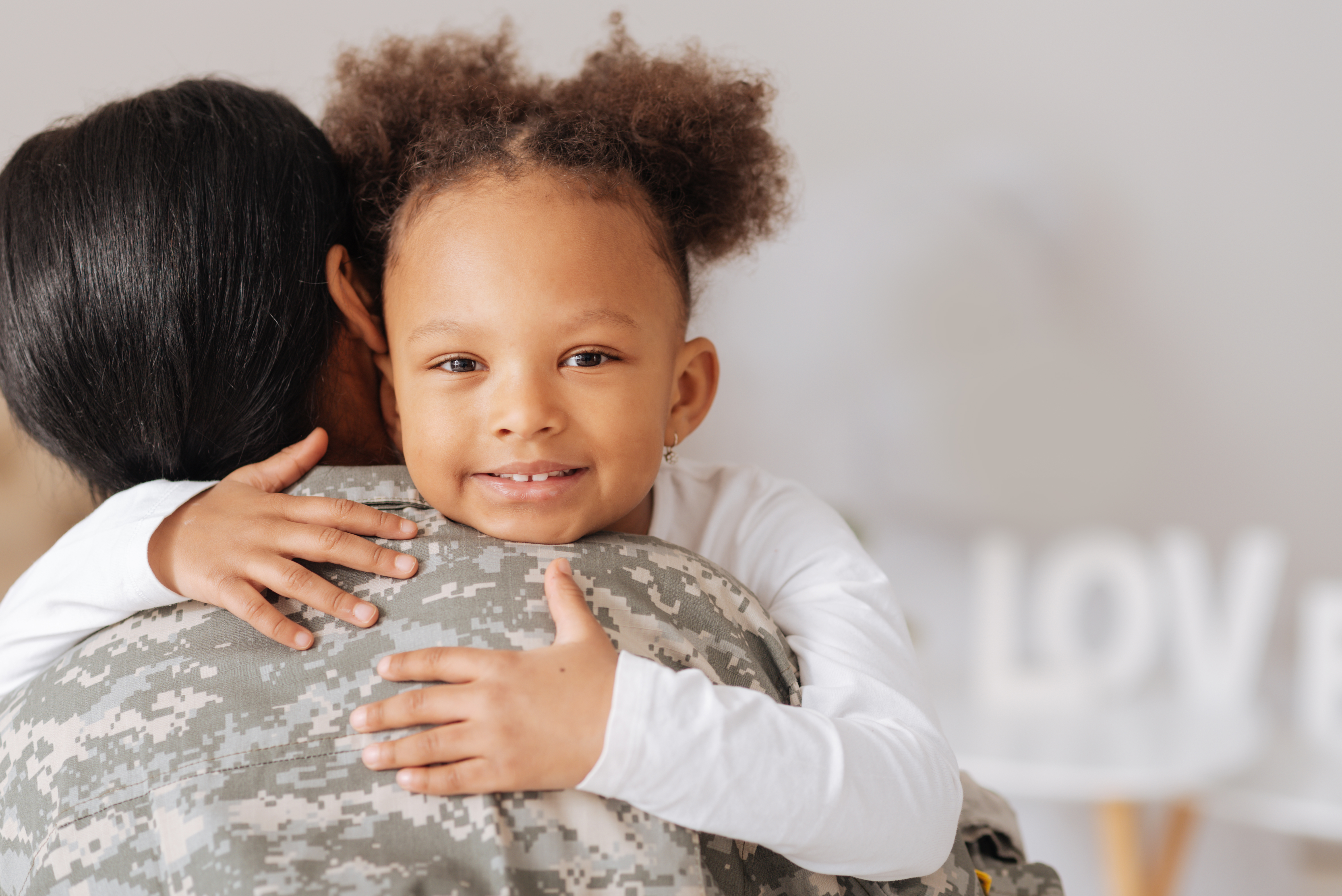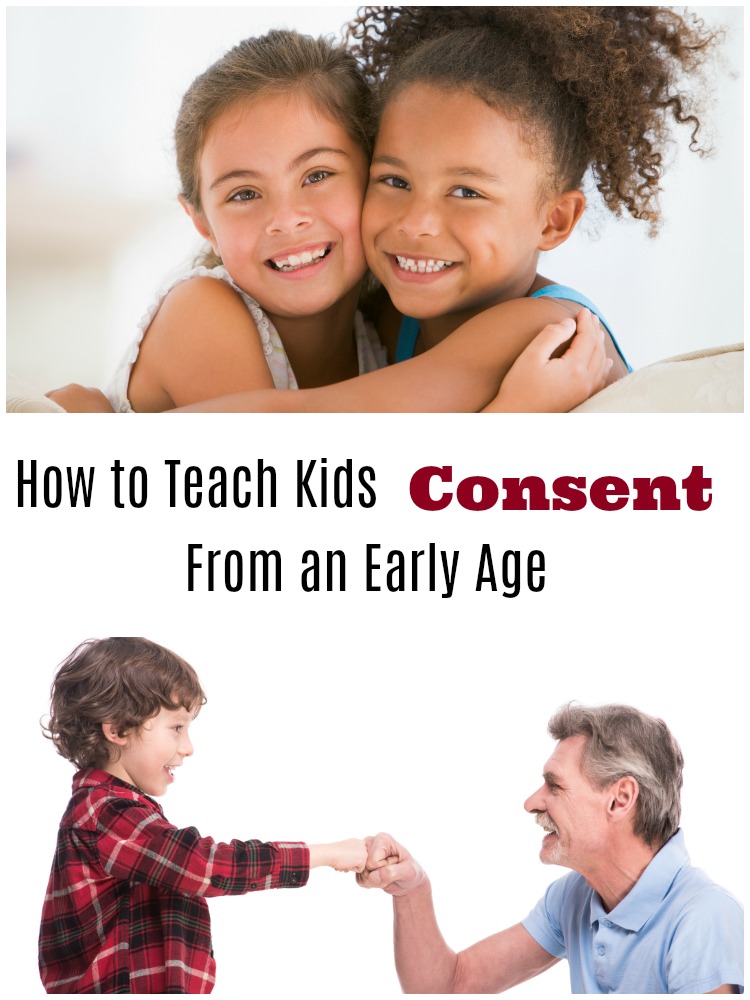How to Teach Children Consent From an Early Age

“Grampa’s leaving now. Would you like to give him a hug or a high five?” we asked as my father-in-law was leaving our home. My five-year old ran in for a big bear hug but my two year old decided she wasn’t in the mood for a hug. She did, however, feel up to giving a little high five. Thankfully, Grampa was completely fine with it and understood that in our home, we don’t force hugs and kisses.
Giving children options like this when a family member often expects some sort of goodbye hug or kiss might not seem like a big deal, but to us it signifies that our children have a choice in how they physically interact with others. This is a simple but important way we can help teach our children that they are in control of their bodies. It lets them decide who they will interact physically and how. A hug or a goodbye kiss for a family member is often seen as necessary, but it should never be forced. My children have a great relationship with their grandparents and love to give them hugs and kisses, but I never want them to feel that they “have” to. Some days they’re just not feeling it. Or maybe they feel uncomfortable giving certain people a hug, and that’s totally okay too. Letting them choose if and when they want to give affection is an important starting place for teaching children consent. Forcing children to give hugs or kisses, even to well-meaning family members, teaches them the opposite: that they are not in control of their own bodies. Although it might seem pointless at first - I mean, come on, it’s family members, right? - it’s important that they know they will never be forced to do anything they’re not comfortable with.
Teaching children about consent is something that can be done easily from an early age, through simple actions like letting our kids decide if they would rather give a family member a hug or a high five or by not forcing them to physically interact with others. Making sure they know all about asking for permission is also really important. We’ve always made a point in teaching our children to ask permission from others if they want a hug or kiss, and vice versa. My five-year-old is incredibly social and has a ton of friends, but he’s not always up for a hug. Even though he’s a very loving little guy, I’ve seen him get upset when one of his friends engulfed him in a huge hug very unexpectedly. After that, we had a good conversation about how it made him feel to be touched when he wasn’t expecting it and the importance of asking someone for permission before giving them a hug (or kiss). We also make sure he knows he has to do the same if he wants to hug or kiss someone. And if that person says no, then you have to respect that decision, even if your feelings are a bit hurt.
Teaching the proper names for body parts also plays a big role in teaching consent, and this can be done from a very early age. When I was growing up, I vividly remember a moment in daycare when we all found out the proper names for our genitalia. We laughed at these funny-sounding names we’d never heard of. Vagina was very different from “pee pee” (what I had been taught) and penis was a far cry from the names many of the little boys had learned. By teaching our children the proper names from the very beginning, we’re showing them that our bodies and genitalia are nothing to be ashamed of. Vagina and penis are not bad words. They’re as much a part of our body as our ears or eyes. We shouldn’t be afraid to use these words openly when our children ask us about their bodies. Ensuring our kids know the correct names for their body parts also eliminates any confusion if something were to happen that they were uncomfortable with. Along with teaching them who can see their bodies and touch them (parents, doctor, etc.), knowing the correct names for body parts means that if anything were to ever happen, a verbal child can easily explain and name where they were touched or asked to touch.
The sad reality is that in the majority of child abuse cases, the perpetrator is known to the child, whether it’s a family member, a teacher, a coach, or a pastor. Equipping our children with the knowledge of who is allowed to see or touch their bodies and private areas and in what capacity (normally this consists of mom, dad, doctor and grandparents and is limited to things like diaper changes or medical examinations, etc.), as well as ensuring that they are always comfortable with what’s happening (and to confide in a parent or other close friend family member if not) can go a long way in teaching consent. One of the most important things that children need to know is that they are in charge of their own bodies.
Teaching consent changes over time as a child grows. The issues and concerns evolve as a child gets older and becomes a teenager, but we can start laying a good foundation for consent and respectful relationships from the very beginning.
